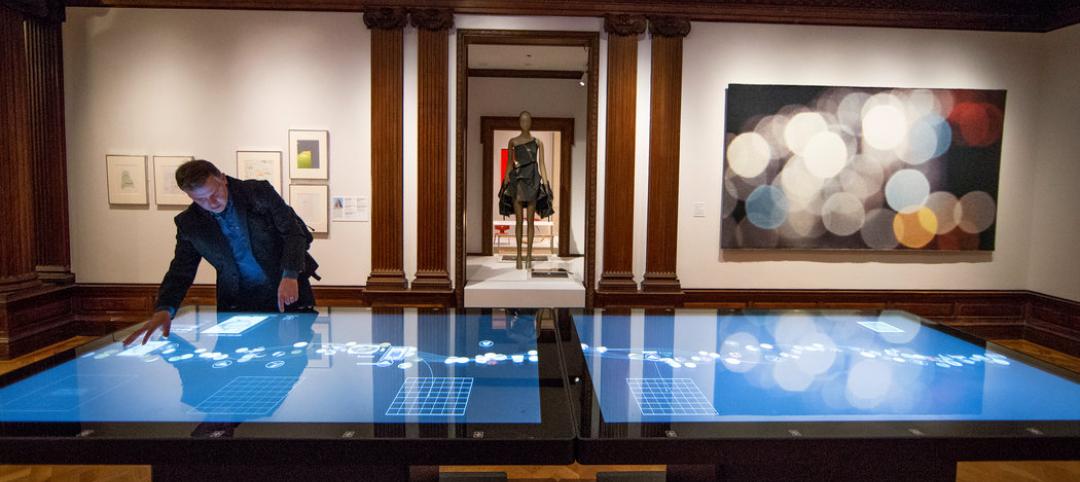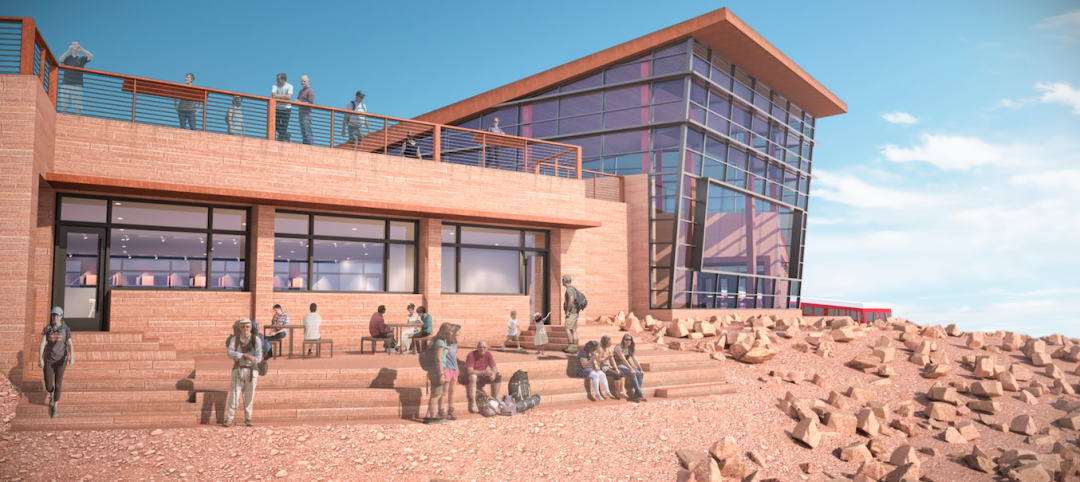 |
|
When rebuilding the observation tower, existing brick was taken down to a constant course, which allowed new brick to blend at the match line. |
For 38 years, the Pere Marquette Depot sat boarded up, broken down, and fire damaged. The Prairie-style building, with its distinctive orange iron-brick walls, was once the elegant Bay City, Mich., train station. The facility, which opened in 1904, served the Flint and Pere Marquette Railroad Company when the area was the epicenter of lumber processing for the shipbuilding and kit homebuilding industries.
In 1953, the 9,300-sf depot underwent an atomic-age modernization to convert it into a Greyhound bus terminal. Classical features like the 66-foot-high observation tower, wraparound canopy, ornamental metal brackets, and porte-cochere were demolished. After the bus station closed in 1969, the property sat vacant for more than three decades.
It took the depot's owner, Great Lakes Center Foundation, from 2002 to 2005 to patch together $3.85 million from local, state, and national sources to begin an extensive but frugal renovation that would bring the building back to life as a community center run by the local Convention and Visitor's Bureau and as offices for the Bay Area Community Foundation.
The Building Team, headed by Quinn Evans | Architects of Ann Arbor, Mich., with local firms Gregory Construction as GC and MacMillan Associates Inc. as engineer, had a mess on its hands. The masonry walls were in decent shape, but the foundation was undermined and the interior was devastated by toxic pigeon guano and fire and water damage, which destroyed most of the ornamental plaster walls and ceilings. The mechanical equipment, boiler, piping, plumbing fixtures, light fixtures, and most of the wiring had been stripped.
The Building Team salvaged the wainscoting and most of the windows and doors, replaced missing tiled canopies, the Spanish clay tile roof, and the observation tower, and repositioned the depot for use as a twenty-first-century community and office building. Although the project did not seek LEED certification, recycled content, low-VOC materials, low-flow plumbing fixtures, radiant heating, and light-sensor controls were used.
“They've done a wonderful job with both the interior and exterior work,” said Reconstruction Awards judge David Callan, SVP Environmental Systems Design, Chicago. Fellow judge Ken Osmun, group president of construction at Wight & Co., Darien, Ill., marveled at the project's bang for the buck. “The budget was so low and they had to make the depot the focal point of the community. I can't imagine the challenges they had to overcome.” —Jay W. Schneider, Senior Editor

Related Stories
Museums | Mar 3, 2016
How museums engage visitors in a digital age
Digital technologies are opening up new dimensions of the museum experience and turning passive audiences into active content generators, as Gensler's Marina Bianchi examines.
Cultural Facilities | Mar 1, 2016
China bans ‘weird’ public architecture, gated communities
Directs designers of public buildings to focus on functionality.
Contractors | Feb 25, 2016
Huntsville’s Botanical Garden starts work on new Guest Welcome Center
The 30,000-sf facility will feature three rental spaces of varying sizes.
The High Line | Feb 24, 2016
The last unused portion of the High Line is set to become a piazza
The piazza replaces an earlier design for the space that called for a bowl-shaped garden.
Museums | Feb 12, 2016
Construction begins on Foster + Partners’ Norton Museum of Art expansion project
The Florida museum is adding gallery space, an auditorium, great hall, and a 20,000-sf garden.
Game Changers | Feb 4, 2016
GAME CHANGERS: 6 projects that rewrite the rules of commercial design and construction
BD+C’s inaugural Game Changers report highlights today’s pacesetting projects, from a prefab high-rise in China to a breakthrough research lab in the Midwest.
Cultural Facilities | Jan 28, 2016
FIRST LOOK: Pikes Peak visitor complex will appear carved into the mountainside, at 14,115 feet
The minimalist structure will provide majestic views of the Rocky Mountains for the 600,000-plus people who visit the summit each year.
Architects | Jan 28, 2016
25-year-old architect wins competition for World War I memorial in Pershing Park
Joe Weishaar and sculptor Sabin Howard were selected from among five finalists and over 350 entries overall.
Architects | Jan 15, 2016
Best in Architecture: 18 projects named AIA Institute Honor Award winners
Morphosis' Perot Museum and Studio Gang's WMS Boathouse are among the projects to win AIA's highest honor for architecture.
| Jan 14, 2016
How to succeed with EIFS: exterior insulation and finish systems
This AIA CES Discovery course discusses the six elements of an EIFS wall assembly; common EIFS failures and how to prevent them; and EIFS and sustainability.
















